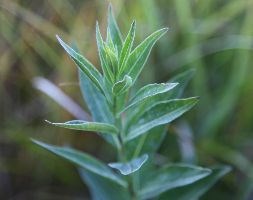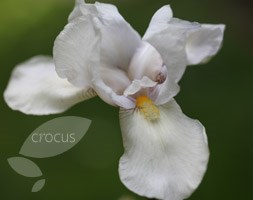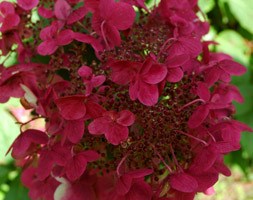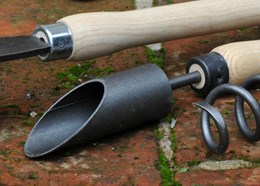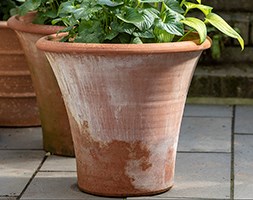Price reductions at Crocus
by Sarah - May 13th, 2014.Filed under: Crocus, Price Reductions.
Crocus reduced the price on these lines today
Amsonia orientalis (Amsonia) was £5.99 now £4.99
Position: full sun Soil: well-drained soil Rate of growth: average Flowering perio d: June and July Hardiness: fully ha rdy Star-like, grey-blue flowers about 1cm across appear from early to midsummer on almost black stems, with lance-shaped, greyish green leaves. A nati ve to Greece and Turkey, this pretty, spreading, clump-forming perennial has the added bonus of autumn colour too. Great for the middle of a sunny border or in a gravel garden. Garden care: This plant does not lik e wet soil, especially during the winter, so make sure it is planted in a freely draining soil. Divide congested plants in spring.
Ballota pseudodictamnus (Ballota) was £7.99 now £5.99
Position: full sun Soil: poor, well-drained soil Rate of growth: average Flowering period: May and June Flower colour: white or pinkish-white Hardiness: fully hardy (borderline) Whorls of white or pink-tinted flowers appear in May and June above the mounds of yellow-flushed grey-green leaves. This upright, woolly-stemmed subshrub looks great in a sunny, well-drained gravel garden, surrounded by other drought-loving plants. Closely related to the ‘false dittany’ traditionally used for lighting oil-lamps in Crete, it may not survive in areas with cold, wet winters. Garden care: Cut back in early spring to retain a neat, compact shape. Avoid overwatering, particularly in winter.
Iris ‘White City’ (bearded iris) was £7.99 now £6.99
Position: full sun Soil: well-drained, moderately fertile, neutral to acidic soil Rate of growth: average Flowering period: May and June Flower colour: palest ice blue fading to pure white Other features: all parts of the plant may cause severe discomfort if ingested Hardiness: fully hardy Slender stems arise from amongst the strap-shaped foliage in late spring or early summer bearing the palest blue flowers, which fade to white as they mature. The beards are white too, but look as though the tips have been brushed with gold. Each flower is large and showy and has a delicate perfume. Try mixing them with soft blues, lilacs and silvers to create a dazzling show. Garden Care: Plant shallowly with the upper part of the rhizome sitting on the surface of the soil, incorporating a low nitrogen fertiliser in the planting hole. After planting remove the upper-most third of the leaves to protect against wind-rock. In exposed areas stake with bamboo canes in early spring. Divide and replant about every three years.
Hydrangea paniculata ‘Wim’s Red’ (PBR) (hydrangea) was £9.99 now £8.99
Position: full sun or partial shade Soil: moist, well-drained, moderately fertile, humus-rich soil Rate of growth: fast-growing Flowering period: July – October Other features: the flower-heads make excellent dried flower arrangements Hardiness: fully hardy A new form with strong stems that carry 30cm-long honey-scented flower clusters, which turn from white to pink, then intensify in colour as they mature to a rich wine red. Its long flowering period and chameleon-like tendencies make it a great investment for the shrub border. Garden care:To enhance flowering prune hard in early spring, cutting back the previous season’s shoots to within a few buds of the permanent, woody framework of the plant.
De Wit short handled crocus / snowdrop bulb planter was £19.99 now £17.99
This De Wit hand bulb planter is forged from carbon steel and turned hardwood ash handles. Measurements: Width: 4cm Length: 62cm The Dutch are rightly regarded as makers of the finest gardening tools. De Wit have been around longer than anyone. They started in 1898 and the 4th generation of De Wits are now in charge of the business; one is a trained wood turner, the other trained as a blacksmith. De Wit forge their tools from carbon steel in the traditional way. Carbon steel is naturally tougher than stainless steel and is not prone to metal fatigue. De Wit also burnish their steel. This not only helps to protect it for longer but gives it a patina that blackens it – just like traditional English tools from the Edwardian era. All De Wit tools have turned hardwood handles of oiled Ash. Ash is not only very strong but resists shock better than woods like oak or beech, which is why it was traditionally used for Axe handles.
Terracotta arc pot was £49.99 now £44.99
A low pot with gently angled sides that provides a generous planting area, which is suitable for a wide range of salad crops, seasonal bedding or alpine plants. Hand-thrown in Turkey, this pot has classic good looks and has an excellent resistance to frost damage. Dimensions: Salad- width 59cm x height 32cm Rosemary – width 53cm x height 45cm Shrub – width 62cm x height 57cm We thin k these classic, unfussy designs work best in an English garden. Although the in spiration came from Tuscany, the pots have been made in Turkey. They are hand th rown (sometimes from 2 pieces of clay for the larger pots) by Argun and his son who are the 3rd and 4th generation of potters from the Izmir region on the Aege an coast. The clay from this area ages to a lovely patina, as the salts slowly l each to the surface. Each pot is fired to 1080 degrees C (to make it as frost proof as possible) and has an extra large drainage hole in the base. Available in more than one size. All sizes sold separately.







